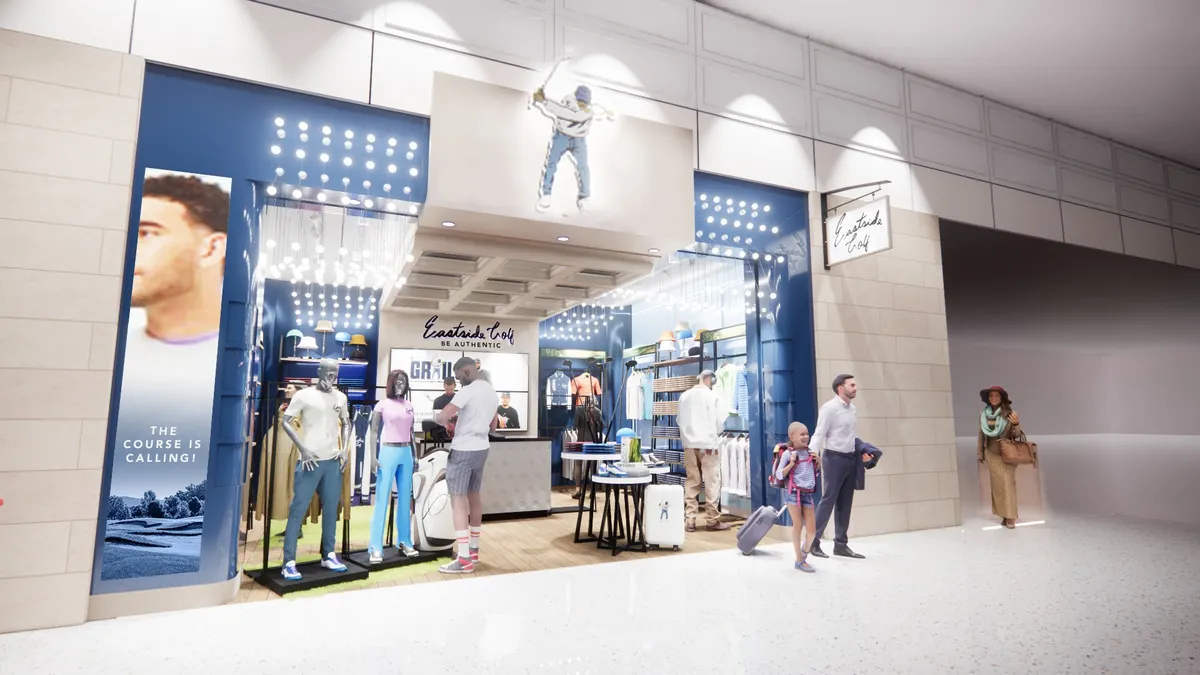Amazon's Prime Day this year boosted e-commerce in the U.S. as rivals held their own sales, sometimes directly competing on price for certain items.
Of course, it was a blockbuster for the e-commerce giant, which in a press release Wednesday boasted that the two-day sale was "the largest shopping event in Amazon history with more than one million deals exclusively for Prime members" and those members saving more than a billion dollars worldwide.
Amazon's sales on July 15 and 16 surpassed those of last year's Black Friday and Cyber Monday combined, as Prime members bought more than 175 million items, according to the release. It was also the "fastest," with "millions of items shipped in one day or faster using Prime Free One-Day, Prime Free Same-Day, or Prime Now worldwide," Amazon said. Prime members in 18 countries shopped the sale, twice as many as the first Prime Day five years ago.
But there was spillover to rivals who played along. On day one, sales at large retailers (those with one billion dollars or more in annual revenue) rose 64% compared to an average Monday, up from last year's 54%, according to Adobe Analytics data emailed to Retail Dive. Even "niche retailers" (those with less than $5 million in annual revenue) saw their e-commerce revenue rise 30%, Adobe found.
All that this year made Prime Day the third sales event outside of the holidays — along with Labor Day last year and Memorial Day this year — to surpass $2 billion in online sales, according to Adobe.
The retailers that stepped up
Many U.S. retailers joined in the sales event with promotions of their own. The first day of the event boosted online traffic "across the board," which accounted for 66% of their lift in revenue, according to Adobe. More than a quarter (27%) of that lift was thanks to increases in conversion, while 7% was from bigger baskets, Adobe said.
Telsey Group analyst Joseph Feldman noted that Costco, Macy's, Best Buy, Michael's, Dick's Sporting Goods, Bed Bath & Beyond, Williams-Sonoma and Party City were among those touting their own specials, in some cases changing their online landing pages to market their sales. While Walmart was assertive in matching some prices, the retailer, along with Home Depot, "did not make any major changes to their website or promotional levels," Feldman noted in comments emailed to Retail Dive.
"After multiple years of investment in technology, traditional retailers have been leveraging the increase in online traffic generated by Prime Day by offering their own deals," he said. "These well-planned promotions should help win customers online without sacrificing much profit. Overall, we expect traditional retailers to also benefit from Prime Day."
That's in part because traditional retailers' physical locations gave them an edge, even when the sales were for online purchases. While consumers typically use buy online, pick up in-store services for less-expensive items, Prime Day drove the average order values of such purchases up 12%, from $115 to $131, according to Adobe.
The competition
Electronics were a key category for the midsummer sale, especially on day one, and that's where much of the price jostling took place.
The best discounts on day one were on electronics, with smart devices tagged with the highest discounts (12% off smart watches, 10% off smart TVs, 9% off smart home items), according to Adobe. Best Buy and Target were especially competitive with Amazon's Prime Day sales on items like televisions and vacuums, according to a blog post from Edge by Ascential senior insight analyst Chris Elliott.
"However there still seemed to be a conscious effort by Best Buy, Target and Walmart to avoid promoting the same products as Amazon," he wrote. "This tactic avoids a price war which, as we saw with the Insignia Television, they would have struggled to win."
In many cases, rivals couldn't have competed on exact items, even if they wanted to, because so many of the products tagged on Amazon as Prime Day specials were its own private labels, according to a report from Profitero emailed to Retail Dive.
The e-commerce analytics firm noted deep discounts on Alexa-enabled devices, including Echo Dot, Fire TV Stick with Alexa Voice Remote and Echo Show. The e-commerce giant also bundled its products, like the Ring, which included a free Echo Dot. At the midway point on day two, nine of the top 10 electronics Prime Day bestsellers were Amazon products. "It's clearly Amazon's intention to not only have Alexa in every household, but in every room in the house," Profitero said.
That squares with Amazon's own report that Prime Day was "the biggest event ever for Amazon devices, when comparing two-day periods." Its bestsellers worldwide were the Echo Dot, Fire TV Stick with Alexa Voice Remote and Fire TV Stick 4K with Alexa Voice Remote, the e-retailer said in its release.
It's still Amazon's day
While many retailers stepped up and even benefited from the "Christmas in July" sale, most of the advantages remain squarely with Amazon, analysts said.
As Profitero notes, the event to a large extent was designed to keep a focus on Amazon's own labels. But its supreme advantage lies in the fact that, for Amazon, the event is less about making a sale and more about expanding its Prime membership. Amazon itself said Wednesday that it "welcomed more new Prime members on July 15 than any previous day, and almost as many on July 16 – making these the two biggest days ever for member signups."
In that regard, rivals continue to miss a chance to truly compete, according to Jeff Greenfield, co-founder of cross-channel marketing firm C3 Metrics.
"Amazon is just one place," he told Retail Dive in an interview. "At the end of the day, it's massive, but it's just a website. The problem is that Prime Day isn't like Cyber Monday or Black Friday. On those days everybody is competing for the best deals, but on Prime Day my mind is still on Amazon. Since it's become a big deal, if you're a marketer you have to compete."
But that means being more than defensive with price cuts, even those carefully calibrated to gain the sale and protect margins, he said. Amazon chose mid-July to hold its event based on data and analysis, and other retailers should do the same. "They didn't pick a date out of the sky, they looked at their own trends and asked, 'How would that prime us for the back-to-school season?' All brands need to do that analysis," he said.
That might mean holding their own special event, as Wayfair has with Way Day and Nordstrom with its much anticipated Anniversary Sale.
"On Prime Day you have to play defense, because Prime Day has primed consumers to consume more," he said. "But they need to create their own day and it needs to be something exciting. Not only do you want it to be great deals, you want it to be buzz-worthy so that the press is writing about it. What Amazon has done with Prime Day is forcing marketers to do what they were built to do, which is think outside the box and be creative."




















